Earwig vs Termite: Spot the Difference Easily
When it comes to pests, I often find myself wondering about the differences between earwigs and termites. Both can wreak havoc in my home, but they are not the same. Earwigs are known for their pincers and love damp areas, while termites feast on wood and can cause serious structural damage.Understanding these pests helps me take the right steps to protect my space. I want to know how to identify them, their habits, and effective control methods. This knowledge empowers me to act quickly and prevent infestations. Join me as I dive into the world of earwig vs termite, uncovering what sets them apart and how I can keep my home safe from both.
Earwig and Termite Overview

Social Structure
Termites live in structured colonies. These colonies can contain thousands of individuals. Within each colony, there are different roles. The worker termites gather food and care for the young. They also build and maintain the nest. Reproductive termites, known as kings and queens, focus on mating and laying eggs. This social system helps them survive and thrive.
In my experience, observing these colonies can be fascinating. I once watched a colony working together to repair their mud tubes. It showed me how essential teamwork, like termites, is for their survival.
Solitary Nature
Earwigs are quite different from termites. They are generally solitary insects. Many earwigs prefer to live alone rather than in groups. This behavior shapes their feeding habits. Earwigs feed on decaying plant matter, small insects, and even some crops. Their diet helps recycle nutrients back into the soil.
I remember finding an earwig in my garden once. It was a termite, busy munching on a dead leaf, showing its role in breaking down organic material.
Food Sources
The primary food sources for termites include wood, leaves, and other plant materials. They consume cellulose found in these items. Subterranean termites often create termite mud tubes to travel between their food sources and nests safely.
Earwigs, on the other hand, have a more varied diet. They eat decaying plant material but also hunt smaller insects. This makes them beneficial for gardens as they help control pest populations.
Understanding these differences is essential for anyone dealing with pest control or studying insects. While termites can cause significant damage to wooden structures, earwigs usually do not pose such threats.
Physical Features Comparison

Color Differences
Earwigs and termites have distinct color differences. Termites are typically white or light-colored, which helps them blend into their environments. This coloration protects them from predators. On the other hand, earwigs have a dark brown to black appearance. Their darker hue allows them to hide in soil or under debris. I find it fascinating how these colors play a role in their survival.
Head Shapes
The head shapes of earwigs and termites also differ significantly. Earwigs possess a broad, flattened head that aids in their burrowing behavior. This shape allows them to navigate through tight spaces effectively. Termites, however, have a more rounded head. Their head shape is suited for their feeding habits, as they chew wood and plant material. I remember once observing an earwig up close. Its flat head was quite noticeable.
Antennae Lengths
Antennae lengths vary between the two insects as well. Earwigs have long, segmented antennae that can be twice the length of their bodies. These antennae help them sense their environment and locate food sources. In contrast, termites have shorter, less pronounced antennae. Their antennae are often straight and less mobile compared to those of earwigs. It’s interesting how these adaptations serve different purposes for each insect.
Presence of Pincers
One of the most striking differences is the presence of pincers in earwigs. These pincers are located at the rear end of their bodies and are used for defense and mating rituals. They can pinch when threatened but are not harmful to humans. Termites lack these pincers entirely, which reflects their more social lifestyle. Instead of defending themselves with pincers, termites rely on living in colonies for protection.
Summary of Differences
To summarize some key differences:
- Color: Termites are light-colored; earwigs are dark.
- Head Shape: Earwigs have broad heads; termites have rounded heads.
- Antennae: Earwigs have long antennae; termites have short ones.
- Pincers: Earwigs possess pincers; termites do not.
These physical features highlight how both insects adapted to their environments differently. Understanding these differences can help identify them easily in nature.
Behavior and Habits
Nesting
Termites live in large colonies. These colonies can have thousands of individuals. Their social structure is complex, consisting of different castes. Each caste has a specific role. The queen lays eggs, while workers gather food and care for the young.
This division of labor helps the colony thrive. I find it fascinating how termites build their nests. They create intricate tunnels and mounds. Some species even form large structures called termite hills. These nests provide protection and maintain humidity levels, essential for the colony’s survival.
Outdoor vs Indoor
Earwigs are primarily outdoor insects. They prefer to stay in moist environments like gardens and under rocks. However, they seek shelter indoors during colder months. They often enter homes through cracks or gaps. Once inside, they look for dark, damp places to hide.
I notice earwigs often appear in my home during winter. I usually find them in the bathroom or kitchen. They seem to enjoy the moisture there. Even though they don’t cause significant damage, their presence can be unsettling.
Feeding Habits
Termites feed mainly on cellulose-rich materials. They consume wood, paper, and plant matter. This diet makes them crucial for breaking down dead trees and recycling nutrients into the soil. Their ability to digest cellulose comes from symbiotic microorganisms in their guts.
In contrast, earwigs have a more varied diet. They eat plants, decaying organic matter, and other insects. They can help control pest populations by preying on smaller insects. While they aren’t as destructive as termites, they can damage gardens if their numbers rise.
I remember seeing earwigs munching on my plants last summer. It was frustrating to watch them destroy my hard work in the garden. I had to take action to protect my flowers from these pests.
Habitat Preferences
Termite Nests
Termites, part of the order Isoptera, have unique nesting habits. They often build their nests underground, especially near wood sources. This preference helps them access food easily. These pest species thrive in warm, moist environments. Their colonies can be quite large, sometimes containing millions of individuals.
I find it fascinating how termites work together within their nests. They communicate and cooperate to build complex structures. These nests provide protection and a stable environment for the colony.
Earwig Habitats
Earwigs prefer moist environments but do not create nests indoors. They often hide under rocks, logs, or mulch in gardens. These predatory species are more active at night and seek shelter during the day. Unlike termites, earwigs do not form large colonies.
During my time gardening, I noticed earwigs lurking around damp areas. They seem to enjoy hiding among the leaves and soil. Their presence indicates a healthy garden ecosystem.
Seasonal Movement
Earwigs exhibit seasonal movement patterns. As temperatures drop in fall and winter, they may enter homes seeking warmth. This behavior often surprises homeowners. Earwigs can slip through small cracks or gaps in buildings.
In my experience, I’ve found earwigs inside when the weather turns cold. It’s essential to check for entry points around windows and doors to prevent them from coming inside.
Damage and Risks
Termite Damage
Termites can cause severe structural damage to homes. They feed on wood, which is a crucial part of many buildings. Wooden beams, floors, and even furniture are at risk. I have seen firsthand how a small termite infestation can lead to costly repairs. Over time, these pests can compromise the integrity of a structure.
A single colony can consume about 5 grams of wood per day. This may not seem like much, but it adds up quickly. In fact, termites cause billions of dollars in damages each year in the U.S. alone. Homeowners often don’t realize they have an infestation until it’s too late. Regular inspections can help catch these pests early.
Earwig Impact
Earwigs, on the other hand, are less harmful to property. They do not eat wood or create structural damage like termites do. Instead, they feed on dead insects and decaying plant matter. I find earwigs beneficial in gardens because they help control pest populations. Their presence can indicate a healthy ecosystem.
Although earwigs may invade homes, they usually do not cause significant harm. They prefer moist environments and often seek shelter in damp areas. Keeping homes dry can reduce their presence indoors. Most people find earwigs more of a nuisance than a threat.
Risks from Infestations
The risks associated with termite infestations are significant. They can undermine the safety of your home without visible signs at first. Many homeowners only discover damage after it has become severe. Termites thrive in moist conditions, making homes near water sources particularly vulnerable.
Preventative measures are essential for safeguarding properties against termites. Homeowners should consider treatments that target moisture levels in their homes. Regular inspections by pest control professionals can also help identify potential threats early on.
In my experience, being proactive about pest management is key to avoiding costly repairs later on. Understanding the differences between these two pests helps in managing risks effectively.
Identification Tips
Color and Shape
Earwigs and termites have distinct colors and body shapes. Earwigs usually appear brown or reddish-brown. Their bodies are long and slender, with a flat appearance.
Termites, on the other hand, tend to be lighter in color. They can range from white to light brown. Their bodies are more oval-shaped and thicker than earwigs.
I often notice that these differences are quite noticeable when I see them side by side. Observing these traits helps in quick identification.
Presence of Pincers
Earwigs have unique pincers at the end of their bodies. These pincers are curved and can be quite prominent. They use them for defense and mating rituals.
Termites do not have pincers at all. Their bodies lack any such appendages. This difference is a clear indicator when identifying these insects.
When I spot an insect with pincers, I immediately think of earwigs. It’s one of the easiest ways to tell them apart.
Nesting Sites
Examining nesting sites is another effective method to differentiate between earwigs and termites. Earwigs prefer damp areas, often hiding under leaves or in soil. They may also be found in decaying wood.
Termites build nests in wood or underground. Their colonies can cause significant damage to structures over time. Identifying their nests can help prevent future problems.
I remember once finding a termite nest in my backyard. It was alarming to see how they had infested a wooden fence post. Knowing where to look made it easier to identify the problem quickly.
Taxonomy Insights
Understanding the taxonomy of these insects adds more depth to identification. Earwigs belong to the order Dermaptera, while termites fall under Isoptera or Blattodea, depending on classification updates.
Both insects share a common trait: they have chitin in their exoskeletons. Chitin provides strength and flexibility, making them resilient creatures.
This knowledge enhances my ability to identify them correctly. It also helps me appreciate their roles in the ecosystem, despite their potential risks.
Treatment and Control Methods
Termite Control
Effective methods exist for controlling termite infestations in homes. Homeowners should consider using liquid termiticides. These chemicals create a barrier in the soil around the foundation. This barrier prevents termites from entering the house. Baiting systems can attract and kill termites. They work by using a slow-acting insecticide that workers carry back to their colony.
Regular inspections are crucial. I recommend having a professional check your home at least once a year. Early detection can save significant damage costs later on.
Earwig Management
Natural deterrents can help manage earwig populations in gardens. One effective method is to use diatomaceous earth. This powder damages the exoskeleton of earwigs, leading to dehydration and death. Sprinkling it around plants can keep these pests at bay.
Another option is to use traps. Simple traps made from rolled newspaper soaked in water can attract earwigs. After they enter, they cannot escape. I have found this method useful in my own garden.
Importance of Dry Environments
Maintaining dry environments is essential for preventing both pests. Termites thrive in damp conditions, as they require moisture to survive. Ensuring proper drainage around your home can significantly reduce termite risks. Fixing leaks and removing standing water also helps.
Earwigs prefer moist areas too. Keeping gardens well-drained discourages their presence. Regularly checking for excess moisture in plant pots or under mulch is beneficial.
When to Seek Professional Help
Termite Infestations
Severe termite infestations can cause significant damage to homes. I have seen firsthand how quickly these pests can destroy wood structures. If you notice signs like mud tubes or damaged wood, contact a pest control service immediately. They have the tools and expertise to handle this issue effectively.
Termites work silently, often going unnoticed until it’s too late. Professional help ensures a thorough inspection and treatment plan. Experts can identify the extent of the damage and recommend the best course of action. This might include chemical treatments or bait systems designed for long-term control.
Earwig Populations
Earwigs can become overwhelming indoors, especially during warmer months. If you find them frequently in your living spaces, it might be time to consult professionals. These pests are usually harmless but can be annoying. A large population may indicate an underlying problem.
I once had an earwig issue in my home, and it was frustrating. I learned that these pests thrive in damp areas. Professionals can assess the situation and provide solutions tailored to your needs. They will identify entry points and suggest preventive measures to keep earwigs at bay.
Benefits of Expert Assessments
Expert assessments offer numerous benefits for managing pest issues. Trained professionals understand pest behavior and biology. They can accurately identify whether you have termites, earwigs, or other pests. This knowledge is vital for effective treatment.
Professional pest control services use advanced tools that most homeowners do not have access to. They can provide targeted treatments that are safer and more efficient than over-the-counter options. They offer follow-up services to ensure the problem does not return.
Conclusion:
Understanding the differences between earwigs and termites is crucial for effective pest management. I’ve highlighted their unique features, behaviors, and habitats to help you identify which pest you might be dealing with. Knowing the damage they cause can save you time and money in the long run.
If you suspect an infestation, don’t hesitate to act. Early intervention is key to protecting your home. Whether you choose DIY methods or call in professionals, being informed makes all the difference. Take charge of your space today and ensure it remains pest-free!
Related:– Termites In Ohio
FAQ’s:
Earwigs are insects with pincers on their abdomen, while termites are social insects that live in colonies. Earwigs are primarily scavengers, whereas termites feed on wood and cellulose.
No, earwigs do not cause structural damage like termites. They may harm plants but are not considered pests in homes. Termites, however, can severely compromise wooden structures.
Earwigs have elongated bodies, usually brown or black, with distinctive pincers at the rear. They are about 1 inch long and have two pairs of wings.
Signs of a termite infestation include mud tubes, discarded wings, and hollow-sounding wood. You may also notice frass (termite droppings) near infested areas.
Earwigs are generally harmless to humans. They do not bite or sting unless provoked. Their presence can be unsettling but poses no health risks.
To control earwigs, seal cracks and crevices, reduce moisture levels, and remove debris around your home. Traps can also help manage their numbers.
Call a professional if you suspect a termite infestation or see signs of damage. Early intervention is crucial to prevent extensive structural damage.

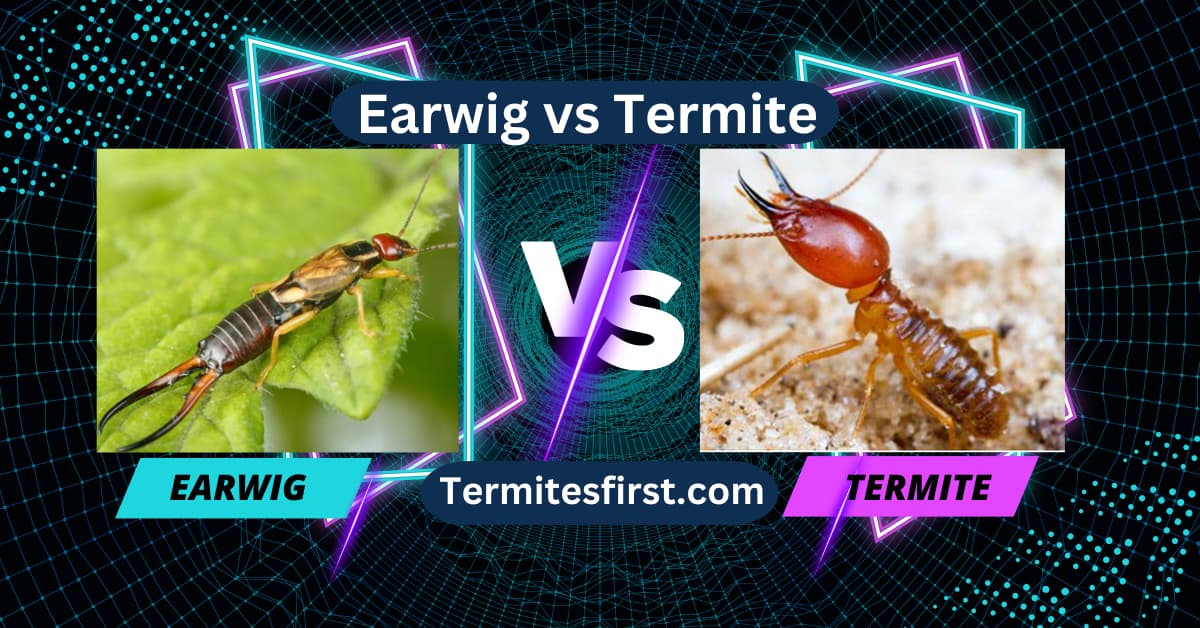
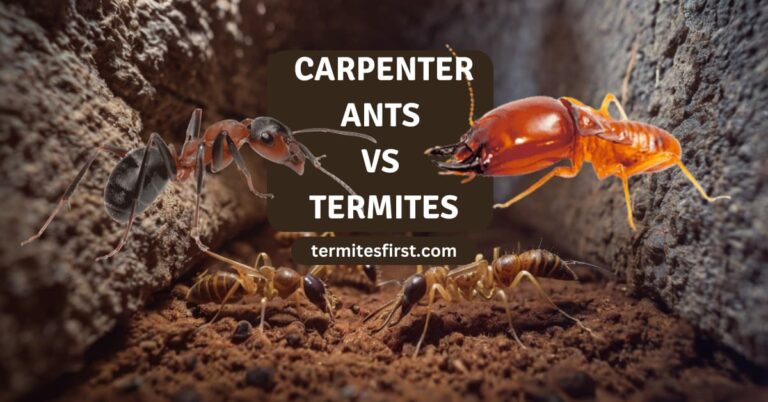
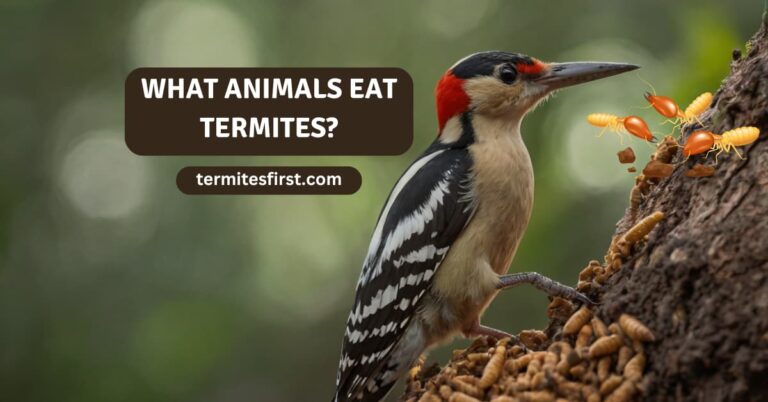
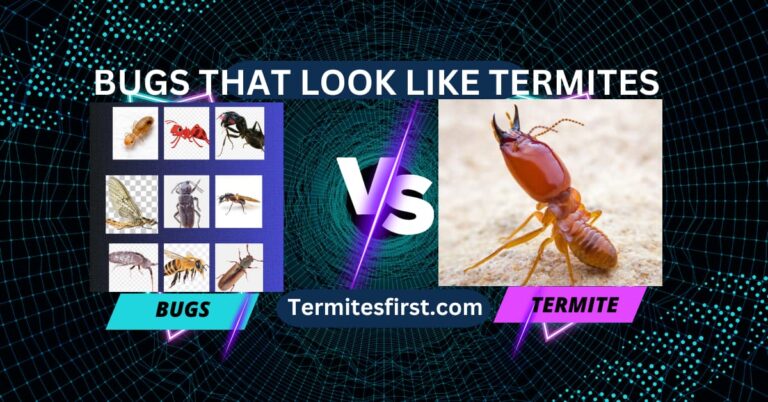
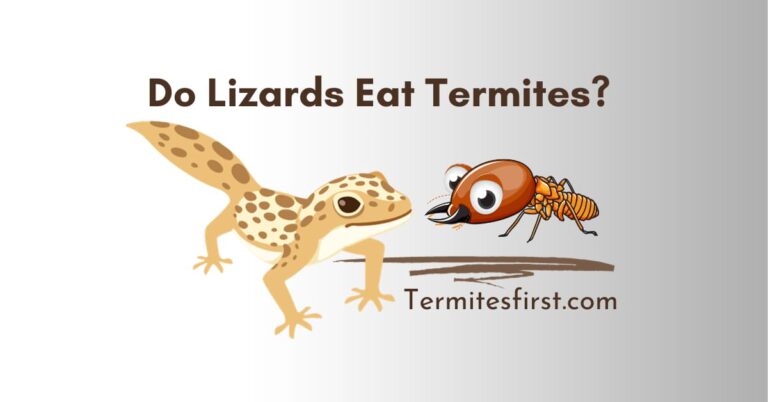
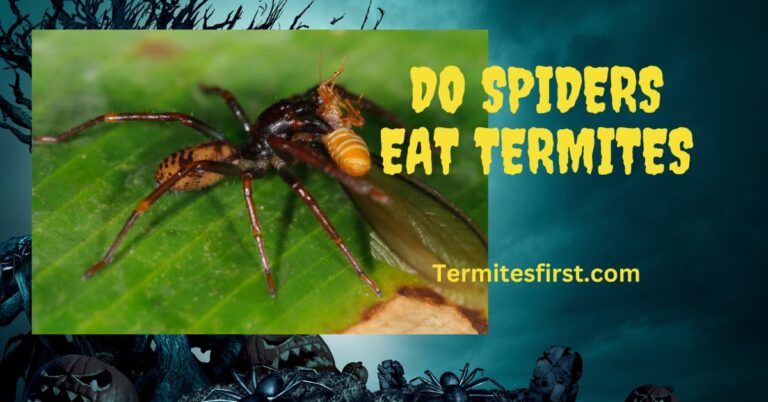
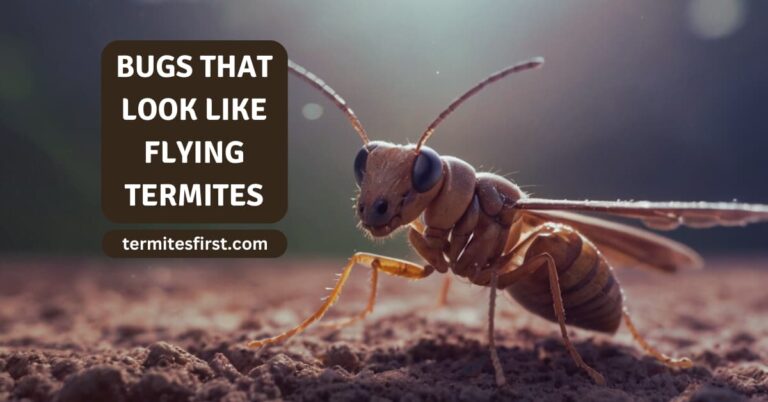
One Comment